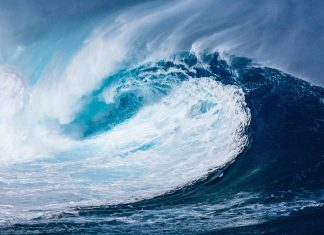India, a country of varied geography and rich ecosystems, has many freshwater lakes that are crucial in supporting life and ecological balance. Scattered throughout the length and breadth of the nation, these lakes not only act as vital sources of drinking water and irrigation but also sustain biodiversity, tourism, and livelihoods for local communities. Let us discuss the importance, variety, and beauty of some of India's most popular freshwater lakes Significance of Freshwater Lakes Freshwater lakes are important in several ways. They supply pure drinking water, replenish groundwater levels, aid agriculture, and serve as natural flood buffers. Most lakes are biodiversity hotspots, harboring different species of fish, birds, and aquatic vegetation. Moreover, lakes contribute to the socio-economic life of surrounding areas by facilitating tourism, fishing, and religious practices. Major Freshwater Lakes in India Wular Lake (Jammu and Kashmir) One of the largest freshwater lakes in Asia, Wular Lake lies in the Union Territory of Jammu and Kashmir. Nourished by the Jhelum River, the extensive body of water is of prime importance for flood control as well as an abode to various fish species and migratory birds. Nevertheless, over the past few years, Wular has also come under the threats of pollution and encroachment, prompting measures for conservation. Dal Lake (Jammu and Kashmir) Commonly referred to as the "Jewel in the Crown of Kashmir," Dal Lake is a breathtaking freshwater lake renowned for its shikaras and houseboats. Nestled in the majestic Himalayas, it is also a source of income for the locals and a tourist destination. The lake is also popular for its floating gardens and traditional vegetable cultivation on artificial islands. Loktak Lake (Manipur) Situated in the northeastern part of India, Loktak Lake is famous for its distinctive floating phumdis (heterogeneous masses of soil and vegetation). It is the largest freshwater lake in the country and is home to the world's only floating national park—Keibul Lamjao National Park, which harbors the endangered Sangai deer. The lake plays a vital role in hydropower generation, irrigation, and fishery. Vembanad Lake (Kerala) While Vembanad is basically a brackish water lagoon, its upper reaches as well as parts of it comprise freshwater. It is India's longest lake and a major attraction in the backwater tourism of the state. The lake also supports inland fisheries and is part of the native ecosystem, more so during monsoons when it serves as a flood buffer. Kolleru Lake (Andhra Pradesh) Located between the Krishna and Godavari river basins, Kolleru Lake is among the largest freshwater lakes in India. The lake is a refuge for migratory birds like pelicans and painted storks and has been recognized as a Ramsar Wetland of International Importance. The lake serves as a prime source of water for agriculture and fish in the region. Bhimtal Lake (Uttarakhand) Bhimtal Lake is situated in the Kumaon hills of Uttarakhand and is a freshwater lake named after the legendary character Bhima. Not only is it a reservoir of water, but it is also a tourist destination due to its calm environment and boating opportunities. It is covered by thick forests and has diverse freshwater fish species. Conservation Challenges Despite being crucial, the majority of fresh water lakes of India are greatly threatened by encroachment, pollution, spontaneous urbanization, and climate change. Sewage, industrial wastes, and trash frequently pollute water bodies. In addition to this, destruction of habitat that leads to the loss of biodiversity is an impending issue. Conservations based on government intervention, as well as community conservations, are critically needed to rescue and preserve such valuable resources. Conclusion India's freshwater lakes are not mere picturesque vistas; they are lifelines for both people and animals. Conservation of these natural water bodies is essential to maintain ecological balance, ensure water security, and promote sustainable development. As guardians of nature, it is our shared duty to protect these lakes for the generations to come.





